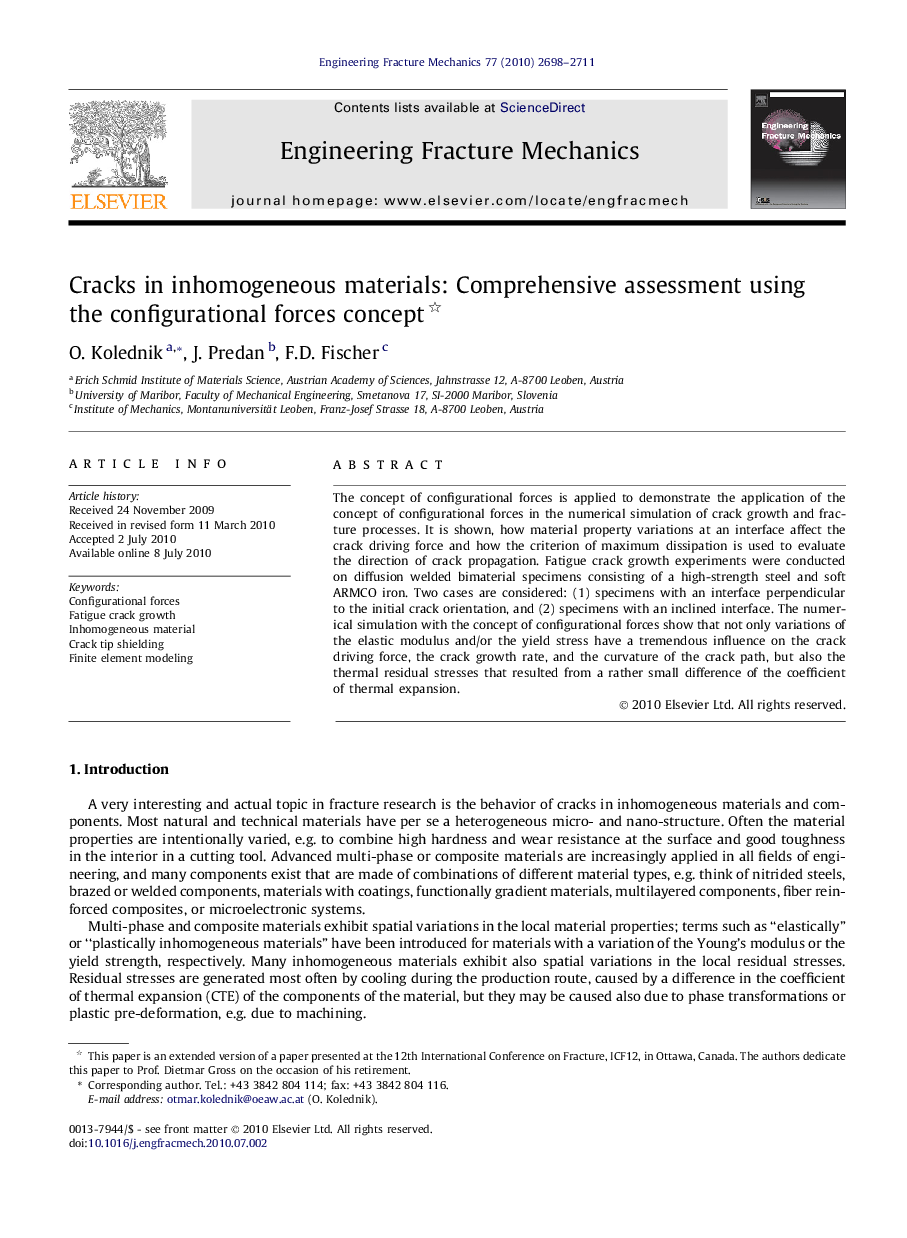| Article ID | Journal | Published Year | Pages | File Type |
|---|---|---|---|---|
| 771001 | Engineering Fracture Mechanics | 2010 | 14 Pages |
The concept of configurational forces is applied to demonstrate the application of the concept of configurational forces in the numerical simulation of crack growth and fracture processes. It is shown, how material property variations at an interface affect the crack driving force and how the criterion of maximum dissipation is used to evaluate the direction of crack propagation. Fatigue crack growth experiments were conducted on diffusion welded bimaterial specimens consisting of a high-strength steel and soft ARMCO iron. Two cases are considered: (1) specimens with an interface perpendicular to the initial crack orientation, and (2) specimens with an inclined interface. The numerical simulation with the concept of configurational forces show that not only variations of the elastic modulus and/or the yield stress have a tremendous influence on the crack driving force, the crack growth rate, and the curvature of the crack path, but also the thermal residual stresses that resulted from a rather small difference of the coefficient of thermal expansion.
